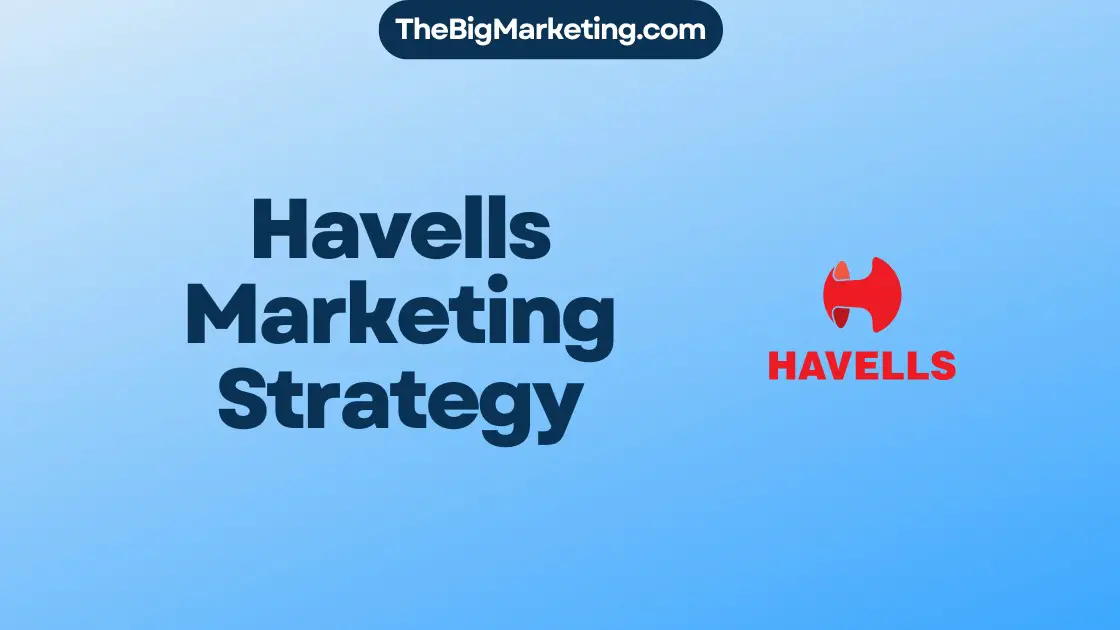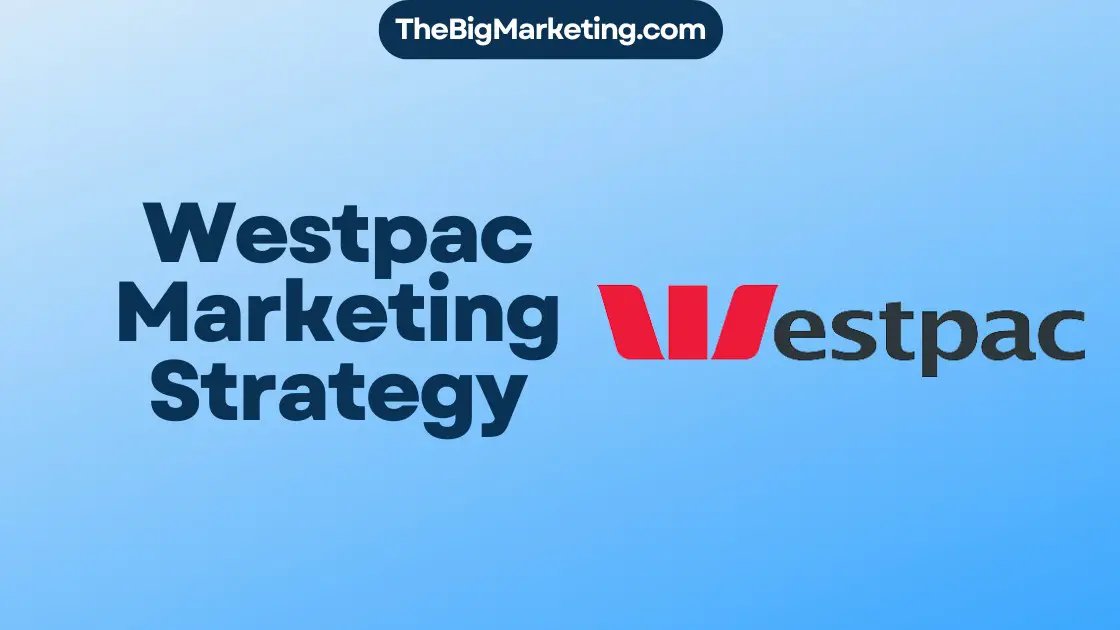Channel partner marketing is a strategic approach that leverages partnerships with third-party partners to expand reach and boost sales. By collaborating with trusted channel partners, businesses can tap into new markets and reach customers that may otherwise be inaccessible, leading to increased revenue. This mutually beneficial relationship allows companies to leverage the expertise and resources of their partners to drive growth and achieve their business objectives.
Partnering with the right channel partners can provide access to new markets and geographies, creating new revenue streams that may have been previously untapped. These partners bring valuable insights into local market dynamics, customer preferences, and cultural nuances, enabling businesses to tailor their offerings and messaging to specific regions effectively.
Incentives and rewards play a crucial role in channel partner marketing. By offering attractive rewards and incentives, businesses can motivate channel partners to actively promote and influence sales. This can drive revenue growth, improve customer satisfaction, and strengthen the overall relationship between the business and its partners.
Regular training and support for channel partners are essential for their success. Providing comprehensive training programs and continuous support helps keep partners up-to-date with the latest products, services, and industry trends. This not only enhances their ability to serve customers but also improves overall customer service and satisfaction.
To maximize the potential of each partner, it is crucial to tailor training programs to their specific needs. Understanding the strengths and weaknesses of individual partners and customizing training modules accordingly can help partners enhance their skills, leverage their strengths, and ultimately achieve better sales results.
Commission structures play a significant role in maintaining strong relationships with channel partners. Effective commission plans ensure that partners are appropriately rewarded for their efforts, incentivizing them to prioritize the company’s offerings. Businesses commonly use various commission structures, including flat-rate commissions, percentage of sales, tiered commissions, recurring commissions, revenue share, cost per lead (CPL), and cost per qualified opportunity (CPQ), depending on factors such as sales strategy, goals, and partner capabilities.
Leveraging partner management systems like Kiflo can streamline commission management processes. These platforms offer benefits such as efficiency, accuracy, scalability, customization, and transparency in reward calculations, making it easier for businesses to manage and motivate their channel partners effectively.
Key Takeaways:
- Channel partner marketing is a strategic approach to expanding reach and boosting sales through partnerships.
- Partnering with the right channel partners provides access to new markets and geographies.
- Incentives and rewards motivate channel partners to drive sales and improve customer satisfaction.
- Regular training and support keep channel partners informed and enhance customer service.
- Tailoring training to specific partner needs maximizes their potential.
What is Channel Partner Marketing?
Channel partner marketing is a strategic approach that allows companies to leverage the power of partnerships to expand their reach and boost sales. It involves collaborating with third-party entities such as resellers, distributors, affiliates, and more to promote and sell products or services.
By forming alliances with reliable and well-selected partners, businesses can tap into new markets, access a broader customer base, and benefit from their partners’ expertise and network.
In channel partner marketing, companies utilize various tactics to amplify their marketing efforts. Some common strategies include:
- Co-branded campaigns: Joint marketing campaigns with partners to enhance brand visibility and attract target customers.
- Joint events and webinars: Collaborative events and webinars to increase engagement, share industry knowledge, and generate leads.
- Referral programs: Encouraging partners to refer potential customers in exchange for incentives or rewards.
- Content co-creation: Collaborating with partners to create and distribute valuable content that appeals to the target audience.
- Social media collaborations: Partnering with influencers or other businesses to expand brand reach and engagement on social media platforms.
Channel partner marketing is a dynamic and evolving strategy that varies across industries. Some sectors have witnessed a substantial increase in the adoption of channel partner marketing strategies. However, the success of partnerships in channel partner marketing depends on careful partner selection, clear communication channels, and mutual goals and expectations.
Successful partnerships often involve joint events and webinars, comprehensive training and support for channel partners, frequent use of co-branded marketing materials, and regular performance measurement and optimization.
| Statistics | Data |
|---|---|
| Percentage of businesses leveraging channel partner marketing strategies | Varied across industries, with some sectors showing a substantial increase in the adoption of such strategies. |
| Ratio of successful partnerships in channel partner marketing | Varies depending on the industry, with figures indicating a positive correlation between well-selected partners and successful outcomes. |
| Occurrence rate of joint events or webinars in channel partner marketing strategies | Commonly utilized by companies to boost engagement and reach, with a high occurrence rate among successful partnerships. |
| Proportion of companies providing training and support to channel partners | Many companies invest in equipping their partners with necessary tools, with a significant proportion offering comprehensive training and ongoing support. |
| Frequency of use of co-branded marketing materials in channel partner marketing | A widely adopted strategy due to its effective brand messaging amplification and validation of partner connections, with a high frequency of usage among successful partnerships. |
| Rate of establishment of clear communication channels between businesses and channel partners | Essential for the success of any partnership, with a high rate of implementation among thriving channel partner strategies. |
| Percentage of companies measuring and optimizing performance in channel partner marketing | A crucial aspect for maintaining fruitful partnerships, with a considerable percentage of companies actively monitoring and optimizing performance metrics. |
| Impactfulness of joint webinars and online events in channel partner marketing | Widely recognized as effective for lead generation and thought leadership establishment, with a high impact rating given their audience and expertise combination. |
| Effectiveness of Market Development Funds (MDF) in incentivizing partners | MDF is perceived as impactful in driving sales and marketing campaigns, with a high level of effectiveness in ROI generation. |
| Success rate of exclusive partner promotions in channel partner marketing | Exclusive promotions are proven to boost sales and loyalty among partner networks, with a high success rate observed among companies implementing such strategies. |
| Significance of content syndication in expanding reach and credibility in channel partner marketing | Considered a valuable strategy for lead generation and industry positioning, with a high level of significance attributed to its impact. |
| Impact of social media collaboration on brand visibility and engagement in channel partner marketing | Highly impactful due to its ability to amplify reach and enhance community building, with a significant influence on brand visibility and engagement. |
| Effectiveness of incentive programs for partner sales teams in driving revenue growth | Incentive programs are recognized as effective in motivating sales teams and directly impacting revenue growth, with a high level of effectiveness noted in driving sales performance. |
| Percentage of software vendors under increased pressure to enhance marketing for partner-driven engagements due to the shift to remote-first environments with a focus on cloud-based technologies. |
Why is Channel Partner Marketing Important?
Channel partner marketing plays a vital role in driving business growth and expanding market reach through strategic collaborations with partners. By harnessing the power of shared resources and audiences, companies can significantly boost their marketing efforts. Let’s explore the key reasons why channel partner marketing is of utmost importance:
- Shared Resources and Audiences: Collaborating with partners in co-branded campaigns allows for the pooling of resources, expertise, and networks. This synergy creates a powerful marketing force, enabling companies to tap into new audiences and increase brand visibility.
- Expanded Reach: Hosting joint events, such as webinars or industry conferences, with partners provides a platform to showcase products or services to a wider audience. This exposure can lead to increased brand awareness and potential customer acquisition.
- Incentivized Referral Programs: Channel partner marketing opens the door to incentivized referral programs, driving lead generation and increased sales. By offering rewards or commissions, companies can motivate partners to actively promote their products or services.
- Showcasing Expertise and Building Credibility: Collaborating with partners to create valuable content, such as blog posts and whitepapers, not only showcases collective expertise but also builds credibility in the industry. This content can position companies as thought leaders and trusted advisors.
- Amplifying Reach and Brand Awareness: Engaging in social media collaborations with influencers or complementary brands can amplify reach and foster brand awareness. By leveraging the reach and influence of well-established social media personalities, companies can extend their brand’s visibility to new audiences.
- ROI-Validated Ecosystem: An ROI-validated ecosystem for channel partner marketing enables companies to measure and prove the impact of their partnerships. By tracking and analyzing key performance metrics, companies can justify resource allocation and strengthen their partnerships for long-term success.
- Enhanced Engagement and Effectiveness: Offering personalized experiences tailored to different partner groups enhances engagement and overall program effectiveness. By understanding the unique needs and preferences of partners, companies can deliver targeted and meaningful messages that resonate with their audience.
- Optimized Email Marketing: Segmenting email campaigns based on partner types increases engagement rates and delivers more relevant content. Additionally, localizing newsletters has shown to significantly impact engagement rates, with open rates sometimes reaching up to 70%. Speeding up content creation and maintaining consistency in sending emails further ensures timely delivery of valuable information to partners.
- Exploring New Outreach Techniques: Leveraging new outreach techniques like text messaging, social media, and paid media expands partner marketing strategies beyond traditional channels. By embracing these modern platforms, companies can maximize their reach and engage with partners on multiple touchpoints.
- Providing Valuable Marketing Assets: Offering shareable social assets and co-branded web pages to partners simplifies product marketing and amplifies brand visibility. Equipping partners with these ready-to-use resources facilitates effective collaboration and enables partners to promote products or services more efficiently.
- Measuring Email Performance: Tracking email performance metrics, such as opens, clicks, and bounces, helps companies measure the effectiveness of their email marketing efforts. This data provides insights into engagement levels and allows for continuous optimization of email campaigns.
- Establishing Strong Relationships: Growing channel partner marketing strategies requires building and nurturing strong relationships. By fostering shared outcomes and aligning goals, both companies and partners can drive successful results and mutually benefit from the partnership.
Channel partner marketing is not just a supplementary tactic; it has the potential to be a powerful driver of business growth and success. By embracing the importance of channel partner marketing and implementing effective strategies, companies can harness the value of collaboration and achieve their marketing objectives.
How to Build a Channel Partner Marketing Strategy
Building a successful channel partner marketing strategy requires a thoughtful approach that benefits both the company and its partners. Personalization is key, as understanding the needs and preferences of your partners will enhance their experience and drive meaningful engagement. To achieve this, consider the following steps:
- Define SMART Goals: Start by setting specific, measurable, achievable, relevant, and time-bound (SMART) goals. This will provide clear direction and help you measure the success of your strategy.
- Choose the Right Partners: Select partners who have a strong presence in your target market and align with your company’s values. Collaborating with partners who share your vision will promote a mutually beneficial relationship.
- Provide Training and Support: Equip your partners with the necessary tools and knowledge to succeed. Offer training programs, sales enablement resources, and ongoing support to help them effectively promote your products or services.
- Utilize Co-Branded Marketing Materials: Co-branding marketing materials with your partners not only amplifies your brand messaging but also validates their connection to your company. This collaborative approach enhances credibility and builds trust among customers.
- Establish Clear Communication Channels: Open and effective communication channels are vital for maintaining strong partnerships. Regular meetings, newsletters, and dedicated portals where partners can access resources can foster collaboration and alignment.
- Measure and Optimize Performance Metrics: Continuously track and analyze the performance of your partner relationships. Use metrics such as engagement rate, leads generated, pipeline coverage, and revenue attributable to marketing to assess the effectiveness of your channel partner marketing efforts.
- Implement Proven Strategies: Leverage proven channel partner marketing strategies to drive sales and foster lasting partnerships. Some strategies include joint webinars, market development funds (MDF), cooperative advertising, exclusive partner promotions, content syndication, social media collaboration, incentive programs, localized marketing, cross-promotional opportunities, and dedicated support teams.
Remember, revenue should not be the sole metric to measure partner program success. Pay attention to leading performance indicators such as engaged partners and customer satisfaction. Additionally, consider the characteristics of potential partners, including their organization size, market maturity, and geographic and vertical markets they cater to, when identifying the ideal partnership opportunities.
Working with partners in countries where your company lacks a sales presence can be advantageous for expanding into new markets. Likewise, partnering with organizations well-versed in new industries can provide valuable insights for success. Ensure that your ideal partners have a deep understanding of verticals and geographies, as this will help fill market gaps and maximize your channel marketing efforts.
By following these steps and incorporating effective strategies, you can build a strong channel partner marketing strategy that drives sales, fosters successful partnerships, and achieves sustainable growth.
Effective Channel Partner Marketing Strategies
To maximize the success of channel partner marketing campaigns, it is essential to implement effective strategies that align with your goals and target audience. By leveraging the right tactics, you can expand your reach, generate more leads, and drive sales growth. Here are some key strategies to consider:
1. Joint Webinars and Online Events
Collaborating with your channel partners to host webinars and online events can be a powerful way to engage your target audience and showcase your expertise. By combining resources, you can create valuable content that attracts attendees, generates leads, and drives conversions.
2. Market Development Funds (MDF)
Allocating market development funds to your channel partners can incentivize them to invest in marketing activities that promote your products or services. MDF can be used for various tactics such as advertising, content creation, and event participation, helping to amplify your brand’s visibility.
3. Cooperative Advertising
Collaborating with your channel partners on cooperative advertising campaigns can allow you to share the costs and resources needed for impactful marketing initiatives. This strategy can help you reach a broader audience, enhance brand recognition, and drive customer acquisition.
4. Exclusive Partner Promotions
Offering exclusive promotions and discounts to your channel partners can incentivize them to actively market and sell your offerings. This strategy not only increases partner engagement but also creates a sense of exclusivity, encouraging customers to make a purchase before the promotion ends.
5. Content Syndication
Implementing a content syndication strategy allows your channel partners to distribute your content, such as blog posts, articles, or whitepapers, through their own channels. This mutually beneficial approach helps to attract a wider audience, boost brand visibility, and generate qualified leads.
6. Social Media Collaboration
Collaborating with your channel partners on social media campaigns can amplify your brand’s presence and engage your target audience. By sharing each other’s content, tagging one another, or co-hosting live sessions, you can leverage their followers and increase engagement with your brand.
7. Incentive Programs for Sales Teams
Implementing incentive programs for your channel partners’ sales teams can motivate them to prioritize your products or services. Offering rewards, such as bonus commissions or prizes, encourages sales representatives to focus on selling your offerings and can deepen the partnership.
8. Localized Marketing Strategies
Adapting your marketing strategies to cater to specific local markets can significantly enhance your channel partner marketing efforts. By providing localized marketing materials, content, and campaigns, you can effectively engage with regional audiences and drive conversions at a more targeted level.
9. Cross-Promotional Opportunities
Identifying cross-promotional opportunities with your channel partners can help both parties expand their customer base and increase sales. By leveraging each other’s networks, you can reach new audiences and gain credibility through mutual endorsements and recommendations.
10. Dedicated Support Teams for Partners
Establishing dedicated support teams that are readily available to assist your channel partners can foster stronger relationships and provide them with the necessary resources to succeed. Offering regular training, marketing guidance, and responsive communication channels helps to ensure a smooth collaboration and enhances partner satisfaction.
11. Performance Analytics and Feedback
Utilizing performance analytics and feedback mechanisms allows you to measure the effectiveness of your channel partner marketing campaigns. By tracking key metrics and gathering partner input, you can identify areas for improvement, optimize strategies, and refine your overall marketing approach.
By implementing these effective channel partner marketing strategies, you can forge strong partnerships, maximize brand exposure, and drive significant sales growth. Remember to align your strategies with your specific goals, target audience, and partner capabilities to achieve the best results.
| Statistic | Insight |
|---|---|
| Channel partner marketing is noted as an effective way to expand reach and generate more leads. | Collaborating with channel partners can significantly increase your market reach and lead generation efforts. |
| Proper partner enablement and activation can lead to a significant increase in deal registrations; Neha saw a 50%+ increase quarter over quarter when her team focused on partner enablement efforts. | Investing in partner enablement can yield substantial results, boosting deal registrations and revenue. |
| Referral partners can contribute up to 20% of annual revenue, with Microsoft boasting over $32 billion in partner-sourced revenue in 2019, indicating the significant impact of partner marketing in boosting sales. | Partner marketing can substantially contribute to overall revenue and sales success. |
Channel Marketing Best Practices
When it comes to channel marketing, implementing best practices can make all the difference in driving successful outcomes. By leveraging these strategies, you can maximize your marketing efforts and optimize partner engagement. Let’s explore some key channel marketing best practices:
1. Measure the Right Metrics
To gauge the success of your channel marketing initiatives, it is crucial to look at both leading and lagging indicators. This includes measuring partner performance, revenue generated, and ROI. Tailor your measurement approach to align with your specific goals and objectives.
2. Take a Revenue Marketing Approach
Adopting a revenue marketing approach means treating your channel partners as an extension of your sales team. This involves aligning marketing efforts with your partners’ specific needs, empowering them with valuable resources, and providing them with the tools necessary to drive sales.
3. Build Customizable Marketing Materials
Creating customizable marketing materials allows your channel partners to tailor their messaging to their target audiences. By providing them with the flexibility to personalize their campaigns, you enable them to effectively reach their customers and drive engagement.
4. Continuously Improve Your Programs
Stay agile and adapt to changing market dynamics by continuously improving your channel marketing programs. Regularly evaluate the performance of your initiatives, gather feedback from partners, and implement necessary adjustments to enhance effectiveness.
5. Incorporate Engaging Tactics
Surprise and delight tactics, such as branded thank-you kits or exclusive incentives, can significantly boost partner engagement. These strategies foster loyalty, encourage active participation, and make partners feel valued and appreciated.
Source: Digital marketing experts estimate the average American is exposed to about 6,000–10,000 marketing messages a day.
6. Communicate Clearly and Segmentedly
Clear and segmented communications play a crucial role in helping partners succeed with your products and services. Tailor your messaging to specific partner demographics, ensuring relevant, succinct, and cohesive communication at every touchpoint.
7. Cut Through Marketing Noise
In a saturated marketing landscape, reaching partners with the right message at the right time is paramount. By delivering targeted communications that cut through the noise, you can increase partner engagement and drive desired behaviors.
8. Focus on Cohesive Brand Experiences
In today’s B2B market, delivering cohesive brand experiences across various channels is essential. This ensures consistency and strengthens your brand’s reputation. Tailor your marketing strategies to align with partners’ purchase decisions and create a seamless brand experience.
9. Leverage Key Metrics for Partner Satisfaction
Similar to Net Promoter Score (NPS) in the customer experience context, partner satisfaction scores are valuable metrics to assess program success. By regularly measuring partner satisfaction and addressing any pain points, you can enhance partner relationships and drive long-term growth.
10. Embrace Solution Co-Creation
Shift towards a solution co-creation mindset to enhance speed and agility in dynamic market landscapes. Collaborate with partners to identify opportunities, solve challenges, and develop innovative strategies that drive mutual success.
Implementing these channel marketing best practices will help you optimize partner engagement, drive results, and achieve long-lasting growth. By continuously refining your strategies, measuring the right metrics, and aligning your messaging with partner demographics, you can create a thriving channel marketing ecosystem.
The Importance of Partner Onboarding in Channel Marketing
Partner onboarding plays a crucial role in channel marketing strategies. It sets the stage for a successful partnership by ensuring that new partners are equipped with the necessary knowledge, resources, and support to effectively market and sell the company’s products or services. By prioritizing partner onboarding, companies can address common challenges such as low partner engagement, abandoned campaigns, and ineffective marketing efforts.
One of the key benefits of effective partner onboarding is the establishment of a strong foundation for a mutually beneficial relationship. When partners receive comprehensive training and guidance during the onboarding process, they can better understand the company’s value proposition and effectively communicate the solutions-oriented value to end customers. This leads to improved representation of product and service differentiators, increased sales, and overall partner productivity.
Effective onboarding also helps partners build a strong understanding of the company’s brand, ensuring brand consistency across marketing and sales efforts. It enables partners to deliver high-quality, professional marketing information to end customers, enhancing the overall customer experience and driving customer loyalty.
Investing in partner education and support is critical for expediting the onboarding process and ensuring successful partnerships. By providing partners with the necessary tools, resources, and ongoing training, companies can accelerate their partners’ path to success. Cinna Mon Consulting specializes in helping software vendors enhance their partner programs, offering valuable expertise in partner onboarding strategies to drive sales and nurture fruitful partnerships.
Clear and measurable metrics and key performance indicators (KPIs) play a vital role in successful partner onboarding. By establishing well-defined metrics, companies can effectively measure partner progress and program effectiveness. This allows for a data-driven approach to improve partner performance and maximize the impact of channel marketing efforts.
It is important to note that onboarding a new partner is not a one-time event, but an ongoing process. While the initial onboarding process typically takes at least one month, it can take up to three months for multiple channel partners. Regular communication and support are essential to maintaining a strong partnership. This includes monitoring progress, defining clear metrics and KPIs, and encouraging open dialogues between the company and its partners.
Manual conversations and traditional methods of managing licenses, permits, commissions, and relationships with channel partners can lead to data and revenue slippage. To streamline partnership management, platforms like Zomentum consolidate critical functions and enhance transparency in the partnership, improving overall efficiency and effectiveness.
Partner Onboarding Checklist:
The Channel Partner Onboarding Checklist provides a comprehensive guide for successful partner onboarding. The checklist outlines crucial steps that companies should consider, including:
- Initializing effective communication channels
- Offering comprehensive education and training
- Assisting partners in selling and promoting the company’s products or services
- Providing leads and opportunities for partner success
- Encouraging motivation and engagement through incentives
- Monitoring partner progress and providing ongoing support
- Defining clear metrics and KPIs to measure partner performance and program effectiveness
- Maintaining regular communication and fostering a collaborative relationship
By following these steps, companies can ensure that their partners are set up for success from the beginning, leading to stronger partnerships, increased sales, and mutually beneficial outcomes.
| Benefits of Partner Onboarding: |
|---|
| Relationship building |
| Increased sales |
| Enhanced product knowledge |
| Brand consistency |
| Loyalty |
| Increased partner productivity |
The Role of Measurement in Channel Marketing
Measurement is a crucial component of successful channel marketing strategies. By tracking various metrics and key performance indicators (KPIs), companies can gain valuable insights into the effectiveness of their channel partner programs. This data-driven approach allows businesses to make informed decisions, optimize their strategies, and drive better results.
Partner Profitability
One important metric to monitor in channel marketing is partner profitability. By analyzing the revenue generated by individual partners, companies can identify the most lucrative partnerships and strategically allocate resources to maximize profitability.
Average Deal Size
Tracking average deal size provides insights into the sales performance of channel partners. This metric helps identify trends, measure partner effectiveness, and understand the impact of different marketing strategies on deal size.
Tracking Product/Solution Breakdown
Understanding the breakdown of product or solution adoption among channel partners is crucial for evaluating portfolio adoption. This metric helps companies identify the most popular offerings and identify areas where additional training or support may be needed.
Competitor Affinity
Considering competitor affinity provides valuable third-party data that can inform channel marketing strategies. By understanding which competitors partners are aligned with, companies can assess market positioning and develop targeted strategies to gain a competitive edge.
Velocity
Velocity is an important metric for assessing channel partner performance. By measuring the speed at which partners move prospects through the sales funnel, companies can identify bottlenecks and optimize the partner enablement process to drive faster sales cycles.
Participation in Incentives/Contests/Sweeps
Encouraging partners to participate in incentives, contests, or sweepstakes can significantly boost engagement. By monitoring participation rates, companies can identify the most effective incentives and promotional activities to motivate and engage partners.
Monitoring Redemption of Earned Points/Payouts
Effectively tracking the redemption of earned points and payouts is essential for incentive programs. This metric allows companies to measure the success of their incentives and ensure partners are receiving the rewards they deserve.
Goal Attainment
Goal attainment reflects the achievement of set targets. By monitoring goal attainment among channel partners, companies can assess their performance, identify areas for improvement, and provide targeted support and resources to help partners reach their objectives.
Retention Rate
Retention rate is a key metric in retaining channel partners. By measuring the percentage of partners who continue to engage and work with the company over time, businesses can identify strategies to improve partner retention and loyalty.
Pipeline Value
Gauging the health of sales pipelines is crucial for assessing overall performance. By tracking pipeline value, companies can identify potential revenue opportunities, measure the effectiveness of their marketing efforts, and make data-driven decisions to optimize their channel marketing strategies.
Opportunities per Partner
Understanding the number of opportunities available per partner is critical for evaluating partner engagement. This metric allows companies to assess partner activity levels and identify any potential performance gaps that may require attention.
Active/Inactive Partners Data
Assessing active and inactive partners data helps evaluate partner activity. By identifying partners who are no longer actively engaged, companies can take proactive measures to re-engage them or focus resources on more productive partnerships.
Channel Churn
Analyzing channel churn is significant for understanding partner turnover. By tracking the rate at which partners discontinue their engagement, companies can identify underlying issues, develop strategies to mitigate churn, and foster long-term partnerships.
Customer Satisfaction Measurement
Measuring customer satisfaction is crucial for assessing partner-customer interactions. By gathering feedback from end customers, companies can evaluate the quality of the partner’s service and identify areas for improvement.
Implementation Satisfaction
Understanding customer experience is vital for optimizing channel marketing strategies. By measuring implementation satisfaction, companies can assess how effectively partners are delivering their solutions and make improvements to enhance the overall customer experience.
Portfolio Adoption Metrics
Portfolio adoption metrics are valuable for cross-selling and upselling. By analyzing the adoption rates of different products or solutions, companies can identify opportunities to offer additional offerings to existing customers and increase revenue.
Knowing the Capability of partners
Understanding the capability of partners in terms of certifications and specializations is essential. By assessing partner skills and expertise, companies can identify top-performing partners and match them with opportunities that align with their capabilities.
Ideal Profile Characteristics
Utilizing ideal profile characteristics data helps identify top-performing partners. By identifying specific traits, skills, or demographics that are common among high-performing partners, companies can target recruitment efforts and develop strategies to attract similar partners.
Survey Responses
Analyzing survey responses provides insights into partner feedback and openness. By gathering feedback through surveys, companies can gain valuable insights into partner experiences, preferences, and areas for improvement.
Partner Rating Scale
Implementing a partner rating scale is essential for uniform scoring and comparison. This allows companies to assess partners consistently, identify top performers, and provide targeted support or incentives based on performance.
Dashboards
Utilizing dashboards that provide real-time data visualization is crucial for performance tracking. By using dashboards, companies can monitor key metrics, track progress, and make informed decisions based on up-to-date information.
Data Frequency
Regular data frequency is crucial for accurate reporting and decision-making. By ensuring that data is updated frequently, companies can have confidence in the accuracy of their metrics and respond quickly to changes in the market or partner performance.
Audience-Specific Dashboards
Audience-specific dashboards cater to varying user needs in the channel marketing ecosystem. By customizing dashboards to specific roles or stakeholders, companies can provide relevant and actionable insights that drive better decision-making and performance improvements.
Overall, measurement plays a critical role in channel marketing, enabling companies to assess performance, identify areas for improvement, and optimize their strategies. By utilizing a range of metrics and KPIs, businesses can drive better results, strengthen partner relationships, and achieve their channel marketing objectives.
Building a Strong Channel Marketing Ecosystem
Building a strong channel marketing ecosystem is crucial for companies to maximize their revenue potential and achieve their business goals. It involves creating a collaborative network of channel partners and implementing strategies to enhance communication, enablement, collaboration, and support. By building and nurturing strong relationships with partners, companies can create a robust ecosystem that drives growth, increases brand awareness, and expands into new markets or verticals.
Effective Communication and Partner Enablement
Establishing clear and effective communication channels with channel partners is essential for a successful ecosystem. Regular communication ensures alignment of priorities and expectations, facilitates the sharing of insights and feedback, and allows for quick problem-solving. Additionally, providing ongoing training and support enables partners to strengthen their sales skills, overcome roadblocks, and effectively promote the company’s products or services.
Collaboration and Co-Creation
Collaboration between companies and channel partners is a key driver of success in channel marketing. By co-creating marketing initiatives, content, and resources, companies can leverage the expertise and unique perspectives of their partners. This collaboration not only enhances the quality of marketing efforts but also fosters a sense of ownership and partnership, leading to increased engagement and better results.
Support and Resources
Supporting channel partners by providing them with the necessary resources, such as marketing materials, sales tools, and technical assistance, is crucial for their success. By offering comprehensive support, companies can empower their partners to effectively promote and sell their products or services, ultimately driving revenue growth and strengthening the ecosystem.
Continuous Improvement
Building a strong channel marketing ecosystem requires continuous improvement. Companies should regularly assess the performance of their partners, gather feedback from sales teams and customers, and leverage third-party sources to make informed decisions. Leveraging advanced data analytics tools like Coro’s Partner Sonar can help source potential partners and identify opportunities for growth across different industries and geographies.
In conclusion, a strong channel marketing ecosystem is built on effective communication, partner enablement, collaboration, and support. By nurturing strong relationships and continuously improving the ecosystem, companies can maximize the potential of their channel partner marketing efforts and drive sustainable growth.
The Benefits of Channel Marketing Management Platforms
Channel marketing management platforms play a crucial role in streamlining and optimizing channel partner marketing efforts. These platforms provide tools and resources for partner recruitment, onboarding, enablement, communication, and measurement. By using a channel marketing management platform, companies can centralize their partner marketing activities, track performance metrics, and gain actionable insights to drive continuous improvement.
One of the key benefits of utilizing channel marketing management platforms is the ability to accelerate growth in market share. These platforms enable companies to effectively collaborate with their channel partners, allowing them to tap into new markets and reach a wider audience. By partnering with knowledgeable and high-quality channel partners, companies can acquire qualified leads and expand their brand presence in existing and new markets.
Another significant advantage of using channel marketing management platforms is the ability to reduce existing sales costs. By leveraging the expertise and resources of channel partners, companies can extend their reach into new markets without incurring additional overhead costs associated with hiring and training a large sales force. This cost-efficient approach not only maximizes the efficiency of the sales process but also increases the sales velocity and scalability of the business.
Furthermore, channel marketing management platforms allow companies to build strong and mutually beneficial relationships with their partners. These platforms provide tools for effective communication, collaboration, and training, enabling companies to align their partner’s efforts with their strategic objectives. By fostering strong relationships, companies can leverage their partner’s local expertise and customer relationships to enhance customer satisfaction and support, while also gaining valuable market insights through a feedback loop.
Effective measurement and tracking of key performance indicators (KPIs) are crucial for the success of channel partner marketing initiatives. Channel marketing management platforms offer robust measurement capabilities that allow companies to monitor various metrics such as engagement, click-through rate, return on investment (ROI), and return on advertising spend (ROAS). These insights provide companies with a deep understanding of the effectiveness of their partnership programs and enable data-driven decision-making to optimize their marketing efforts.
| Benefits of Channel Marketing Management Platforms |
|---|
| Centralize partner marketing activities |
| Streamline partner recruitment and onboarding |
| Enhance communication and collaboration with partners |
| Track and measure performance metrics effectively |
| Optimize partner marketing strategies |
| Maximize market reach and market share |
| Reduce existing sales costs |
| Build strong relationships with partners |
| Improve customer satisfaction and support |
| Gain valuable market insights through partner feedback loop |
Effective Channel Partner Marketing Strategies in Practice
Implementing effective channel partner marketing strategies is crucial for companies to maximize their sales potential and expand their reach. By leveraging the power of channel partnerships, businesses can tap into new customer segments, increase brand visibility, and drive revenue growth. To achieve success in channel partner marketing, companies need to adopt a strategic approach and implement proven strategies.
1. Define Clear Goals
Before embarking on any channel partner marketing initiatives, it is essential to define clear goals. This includes identifying specific sales targets, market penetration objectives, and desired outcomes from channel partnerships. By having well-defined goals, companies can align their strategies and activities accordingly, ensuring a focused and targeted approach.
2. Recruit the Right Partners
The success of channel partner marketing heavily relies on recruiting the right partners. It is crucial to carefully evaluate potential partners based on their alignment with the company’s brand, complementary products, technical expertise, and market fit. A thorough assessment can help identify partners who share similar values, have a similar sales process, and possess a manageable commitment level.
3. Provide Training and Support
Equipping channel partners with the necessary knowledge about products, target market, and competitive advantages is key to their success. Companies should invest in training programs and resources to educate partners about the intricacies of the products or services they will be promoting. Ongoing support should also be provided to address any inquiries and ensure partners have the necessary tools to effectively market and sell the offerings.
4. Develop Co-branded Marketing Materials
Collaborating with channel partners to develop co-branded marketing materials can significantly enhance the effectiveness of marketing campaigns. This can include joint content creation, co-branded ads, and promotional materials. Co-branded assets help build trust and credibility among customers, as they see a unified message from both the company and its partners.
5. Establish Clear Communication Channels
Open and transparent communication channels are essential for effective channel partner marketing. Companies should establish regular communication routines with their partners, providing updates on marketing initiatives, sharing insights and information, and collaborating on joint campaigns. Clear communication ensures alignment and enables partners to provide valuable feedback and input throughout the marketing process.
6. Measure and Optimize Performance
Regularly monitoring and analyzing channel performance is crucial to identify areas of improvement and optimize marketing strategies. Key performance indicators (KPIs) such as sales volume, market coverage, service quality, and profitability should be tracked and evaluated. By gaining insights from data analysis, companies can make data-driven decisions, refine their strategies, and enhance overall channel partner marketing performance.
7. Experiment with New Outreach Techniques
Continuously experimenting with new outreach techniques can help companies stay ahead of the competition and expand their customer base. This can include exploring emerging marketing channels, leveraging social media platforms, or utilizing influencer partnerships. By embracing innovation and staying agile, companies can adapt to evolving market trends and reach their target audience effectively.
8. Build Solid Relationships
Building strong relationships with channel partners is instrumental in long-term success. This involves fostering trust, collaboration, and mutual support. By treating channel partners as valued stakeholders and investing in relationship-building activities, companies can create a productive and sustainable network of partners who are committed to driving shared success.
By implementing these effective channel partner marketing strategies, companies can maximize the benefits of collaborative partnerships and achieve significant sales growth. It is essential to continuously evaluate and optimize strategies based on market dynamics and partner feedback to maintain a competitive edge in channel partner marketing.
Conclusion
In conclusion, channel partner marketing plays a vital role in driving sales growth and expanding market reach for businesses, particularly in the technology industry. The statistics show that leveraging channel partner marketing can lead to faster adoption, increased brand visibility, and higher revenue generation. By partnering with local distributors or resellers, companies can achieve a significant increase in market coverage.
Effective channel partner marketing strategies involve collaborative sales promotions, joint events, content co-creation, incentive programs, and social media collaborations. Motivating partners through incentives and rewards can boost their performance and drive shared goals forward. It is crucial to establish strong relationships with partners, provide training and support, and continuously measure and optimize performance to ensure the success of channel partner marketing efforts.
To maximize the potential of channel partner marketing, companies should approach partnerships with a well-prepared plan, aiming for a long-term view and aligning with overall corporate strategy. Seeking regular feedback from channel partners and analyzing competitor channel programs can also contribute to tailoring messages and recruitment pitches effectively. By actively pursuing desired channel partners and monopolizing quality partnerships, companies can limit market access for competitors and gain a competitive edge.
Overall, channel partner marketing is a powerful strategy for companies looking to enhance customer retention, drive sales growth, and expand their brand visibility. By implementing the best practices outlined in this article, businesses can build strong channel partnerships and reap the benefits of a mutually beneficial relationship.








